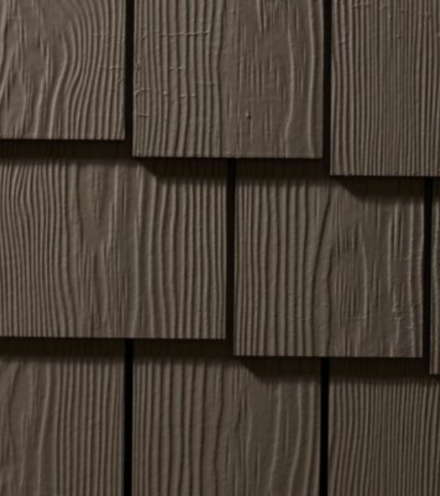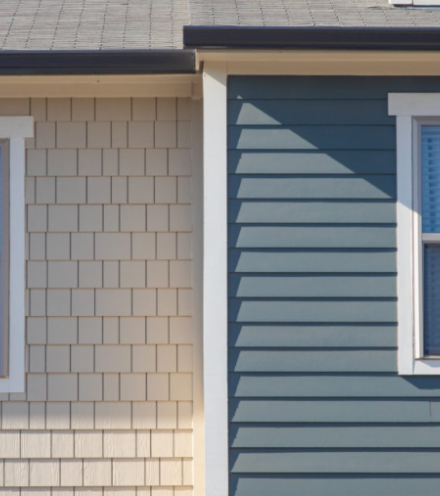No matter how beautiful your home’s siding, your exterior won’t be complete without the right trim. Trim is what helps give the facade a finished appearance, covering the edges and framing the home, the doors, windows, and roofing. It also helps protect these areas, keeping out rain, snow, moisture, and wind that could end up damaging your home.
In many cases, you will replace your trim with your siding, and while your trim will likely be made of the same material as your siding, sometimes the trim can wear out more quickly and will require replacing first. If the rest of your siding is in good shape, but your old wood trim has begun to soften or rot, you may want to consider replacing it with a wood trim alternative. There are many options available for trim that can help you restore your home back to the condition you desire, and one newer option that is often the best fit for any home.
Why Use a Wood Trim Alternative?
Wood trim was first used to complete wood-framed homes. It can be cut and shaped in a variety of ways and can be painted or stained to complement any home or siding color. But like wood siding, wood trim also has several problems and disadvantages.
Wood is susceptible to problems caused by moisture and insects. It can absorb water and swell, then shrink again when it dries, which often causes it to warp. To protect it from these issues, wood is usually coated in either paint or stain. But the paint is not a permanent solution, and it will begin to crack, peel, chip, and fade within a few short years. When this happens, water and insects can now access the wood, causing issues such as wood rot.
Many people often overlook their trim when the time comes to deal with their siding. This, plus the fact that trim often covers corners and areas of the home more susceptible to movement, often means that the trim fails long before the siding does. And without trim protecting the edges of your home, it can both lower the curb appeal of the property and allow moisture to start infiltrating around the siding, causing issues for your home long-term.
Wood Trim Alternatives
As people grasped the issues with wood siding and began seeking alternatives, they also began seeking alternatives for their trim as well. These wood alternative trims often match wood alternative sidings, but can also be installed on homes with wood siding if the trim requires replacement first.
1. Vinyl Trim
Vinyl trim was first created in the 1950s along with vinyl siding. Like vinyl siding, the trim is made of a type of plastic that’s created in a mold. The color of the trim goes right through, so it doesn’t peel, chip, or fade, and it requires a lot less maintenance than wood trim.
While wood trim is usually made of two or more pieces installed together at an angle, vinyl trim is designed to wrap house corners and soffits easily. This can give your home a seamless appearance, along with a natural-looking wood grain that can complement a range of home styles and facades. Like vinyl siding, vinyl trim is impervious to moisture or insect activity, so you don’t need to worry about the same types of issues with vinyl trim as you would with wood trim.
Vinyl trim does have some drawbacks, however. It’s available in limited colors, so if you want a trim that is in a contrasting color to your siding, you may not be able to find the right match. Vinyl is not designed to be painted, either, so it’s not simply a matter of painting it a color that you choose.
Vinyl also doesn’t perform well in extreme cold or heat. In cold temperatures, the plastic can become brittle, which means that any hard knock on the corner of your home could result in the trim cracking. In heat, the material can soften, which may cause it to melt and warp. This is also true in the event of a fire; vinyl is not considered to be a flame-retardant material. So, while vinyl is lower in maintenance than wood trim, it’s not completely maintenance or worry-free.
2. Aluminum Trim
Aluminum siding was one of the first wood alternatives, and aluminum trim followed shortly after. Like aluminum siding, it’s made of a lightweight metal that’s been painted, and that can be bent and formed into any shape. It’s typically paired with aluminum siding, but can also be used with wood siding as well.
Aluminum doesn’t rot and is impervious to insect activity. It’s also flame retardant, so it’s definitely a better option than either wood or vinyl in that regard. However, aluminum does have a tendency to fade within just a few years, becoming chalky over time. This will mean that you will need to repaint your trim periodically.
Aluminum trim can also dent fairly easily upon impact, so if you live in an area that sees a lot of hail or other storms, aluminum can take a beating in a very short period of time. Vinyl siding and trim were actually made to address some of these weather-related issues, which have not improved over the years, and which often mean that aluminum is not the best fit for many homes.
3. Steel Trim
Steel is another metal trim that usually performs better than aluminum. It’s more durable and doesn’t dent the way that aluminum does. It also usually has a wood-look grain to it, while aluminum is usually smooth, so steel trim can give you a slightly more realistic look to it.
Steel trim is often installed with steel siding, but is also an alternative to wood that can be paired with wood siding.
Like aluminum, some steel trims may also fade and become chalky over time, meaning that they still need to be painted. Steel can also rust if the surface of the trim were to become damaged or scratched, which means that the trim section would need to be replaced. Steel is also heavy, and difficult to cut, so it can be harder to install than some other types of trim. It can be painted, but comes in a limited range of colors.
4. Fiber Cement Trim
Another alternative to wood trim, without many of the drawbacks of the others, is fiber cement trim. Like fiber cement siding, the trim comes in a wide range of colors and can be painted, so it’s possible to easily match the rest of your home’s facade. It’s fade-resistant, so it doesn’t require the same amount of care as other types of trim. It’s also available in different sizes and lengths, so you can easily customize it to your home exterior style.
Fiber cement is also flame retardant and matches up well with other materials, such as wood, so it’s possible to create a cohesive look for your home, regardless of what kind of siding you already have installed.
Get the Best Trim Material for Your Home
If your trim is old, worn, or rotting, it needs to be replaced to help keep your home in the best possible condition. And while you have a lot of wood trim alternatives to choose from, only fiber cement can give you the lowest maintenance combined with the most style options. Consider fiber cement trim from Allura for your home to finish its edges in style.




